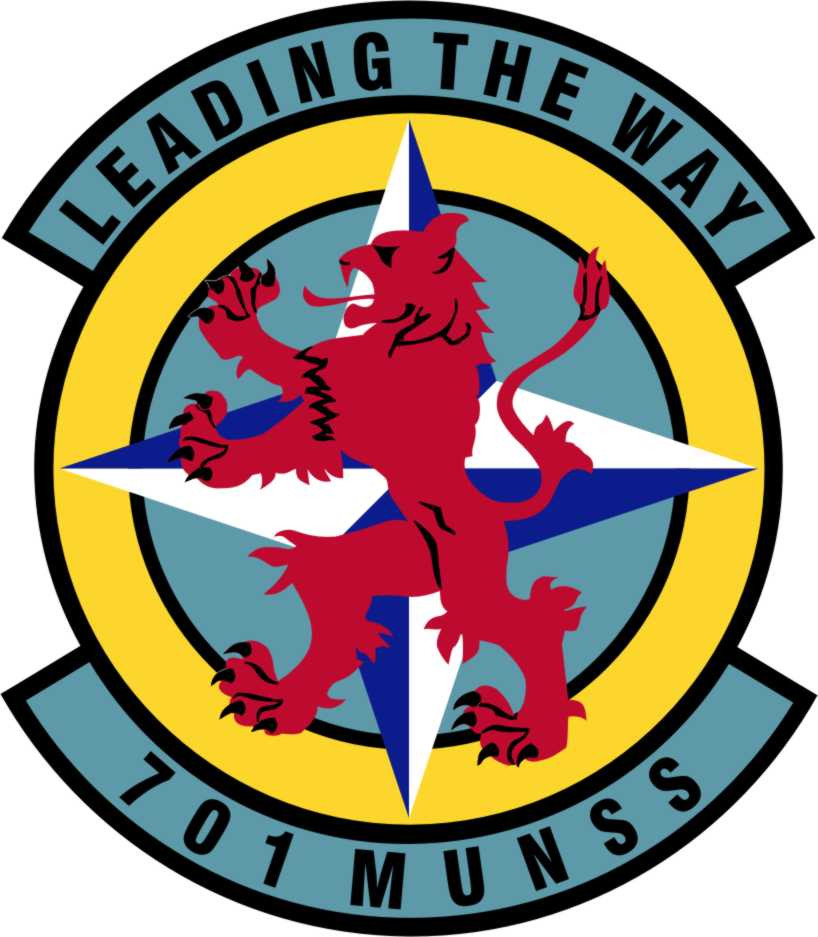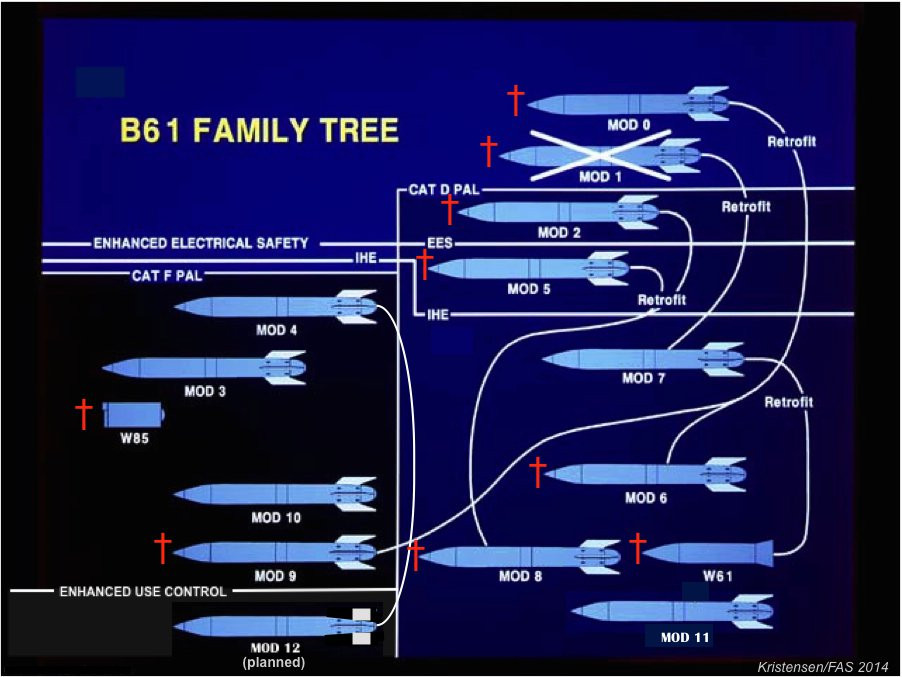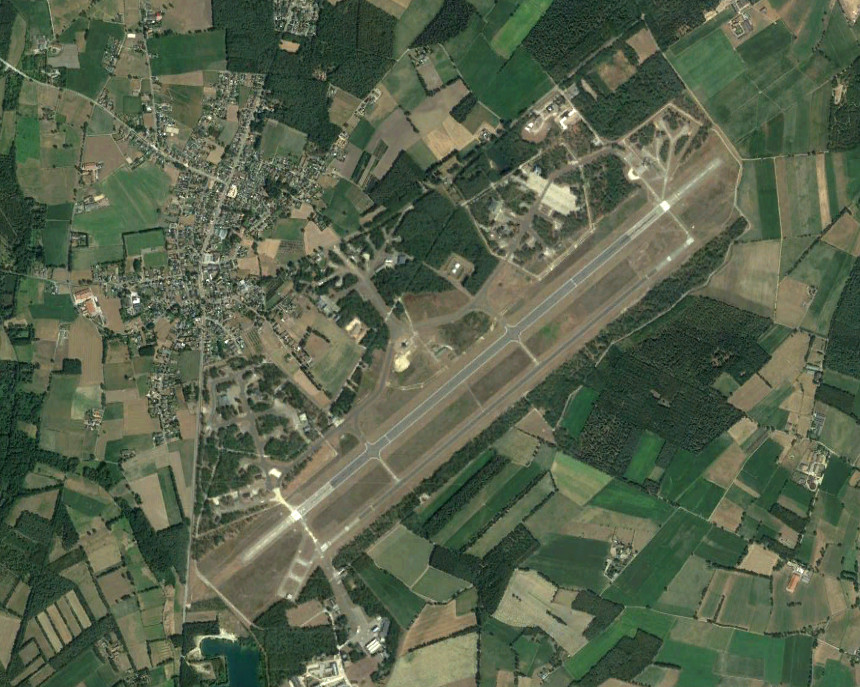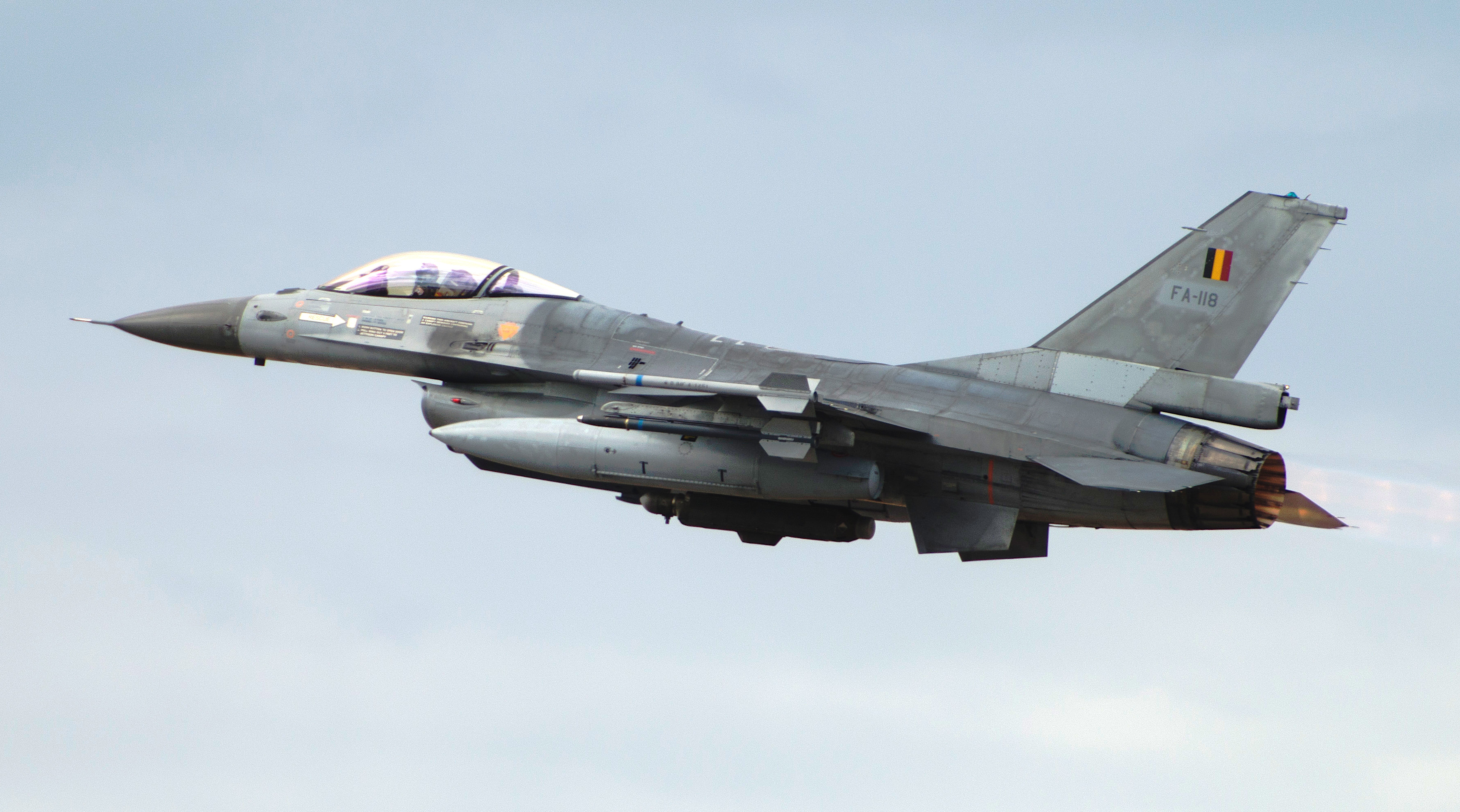The U.S. Air Force has released a picture of a large 701st Munitions Support Squadron logo that hangs in a conference room within the unit’s facilities at Kleine Brogel Air Base in Belgium. It features an eagle holding what is almost certainly meant to be a representation of a B61 nuclear bomb. This highlights the 701st’s primary mission, which is overseeing a stockpile of B61s at Kleine Brogel that could be loaded onto Belgian F-16AM/BM fighter jets during a major crisis as part of a NATO nuclear weapons sharing arrangement. This is an unusual acknowledgment of the presence of the approximately 20 B61s at the base, which is an ‘open secret,’ but is something the Belgian government does not officially confirm or deny as a matter of policy.
In addition to the nuclear-armed eagle, the circular logo also has a silhouette of Belgium filled in with representations of the American and Belgian flags, as well as the text “701 MUNSS” at the top and “Leading The Way” at the bottom. This is not the 701st’s official unit insignia, which also includes the phrase “Leading The Way,” but has a red lion, “an honorary symbol of dedication” that “reflects the unit’s link with its host location,” placed over a star similar to the one in the official NATO logo at its center.


The photograph of the wall hanging at Kleine Brogel was posted on the U.S. military’s Defense Visual Information Distribution Service (DIVDS) website, an online clearinghouse for official media materials, on March 31, 2021. It was included in an Air Force news story about the scheduling of maintenance activities within the 701st, which is a geographically separated unit that falls under the control of the 52nd Munitions Maintenance Group based at Spangdahlem Air Base in Germany. There are no U.S. combat aircraft based at Kleine Brogel.
The nuclear bombs stored at Kleine Brogel and elsewhere in Europe are understood to be a mix of B61-3 and B61-4 variants, which are defined as “non-strategic” or “tactical” types. Both versions are so-called “dial-a-yield” designs that can be set to detonate with different levels of destructive force as desired. The B61-3’s reported yields ranging from 0.3 kilotons to 170 kilotons, while the B61-4s are said to have various settings between 0.3 kilotons and 45 kilotons. Both of these variants are among the members of the B61 family that are set to be replaced by the new B61-12, which you can read more about in detail in these past stories.

Kleine Brogel is one of six bases across Belgium, Germany, Italy, the Netherlands, and Turkey where it is well established that the U.S. military keeps stores of B61s. The bombs in at Belgian, German, Italian, and Dutch bases are there as part of a nuclear weapons sharing agreement and could be loaded on those countries’ combat aircraft. The weapons at Incirlik Air Base in Turkey are solely for use on U.S. aircraft.
As already noted, however, the Belgian government does not publicly confirm or deny the presence of U.S. B61 bombs at Kleine Brogel, going so far as to threaten to sue Google for not blurring parts of base in satellite images available through Google Earth, though officials sometimes get very close to doing so. The U.S. military also does not generally discuss any of the stockpiles of these bombs across Europe, either.

The 701st’s mission is “to receive, store, and maintain US munitions, and to provide custody and control of those munitions until receipt of proper authority to release them to the Belgian Air Force 10W TAC [10th Tactical Wing] (F-16 aircraft) in support of NATO’s Strike Mission,” is all an official directory of U.S. military units has to say on the matter. Still, the language regarding things like “custody and control” and “authority to release” all but publicly confirms the presence of the B61s at Kleine Brogel.

All of this underscores how unusual it is for the Air Force, even indirectly, to highlight its nuclear mission in Belgium or anywhere else within the territory of other NATO member states. The continued stockpiling of these weapons in Belgium, as well as in Germany, Italy, the Netherlands, and Turkey, is a controversial topic and often the subject of fierce domestic political debates in those countries.
These debates have largely centered on security and environmental concerns, as well as general opposition to nuclear weapons. These issues are not always mutually exclusive, as was underscored in 2010 when anti-nuclear activists breached the perimeter of Kleine Brogel. They also often crop up in domestic U.S. politics, as well. In recent years, amid a significant chill in U.S.-Turkish relations, there have been growing calls to completely remove the stockpile of B61s from that country.
With regards to Belgium, specifically in 2019, news that a draft report from the NATO Parliamentary Assembly, or NATO PA, specifically mentioned Alliance members that host B61s touched off something of a scandal in that country. The NATO PA is a consultative organization made up of lawmakers for NATO member states, but is separate from the Alliance. NATO officials subsequently stressed that, as such, the NATO PA report, which was later amended to remove any mention of nuclear weapons in specific countries, was not a formal alliance document. In January 2020, a proposed resolution calling for the withdrawal of U.S. nuclear weapons from Kleine Brogel was knocked down, but only by a narrow margin, in Belgium’s parliament.
As the logo in the 701st Munitions Support Squadron’s conference room makes clear, at least for the time being, American B61 nuclear bombs remain in storage at Kleine Brogel, ready to be loaded into Belgian F-16s should the need ever arise.
Contact the author: joe@thedrive.com
